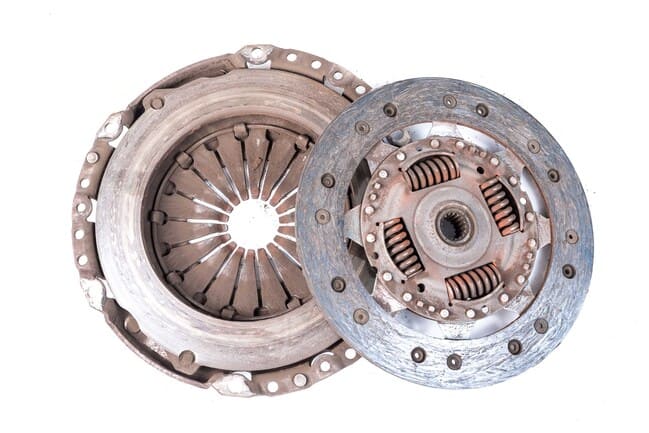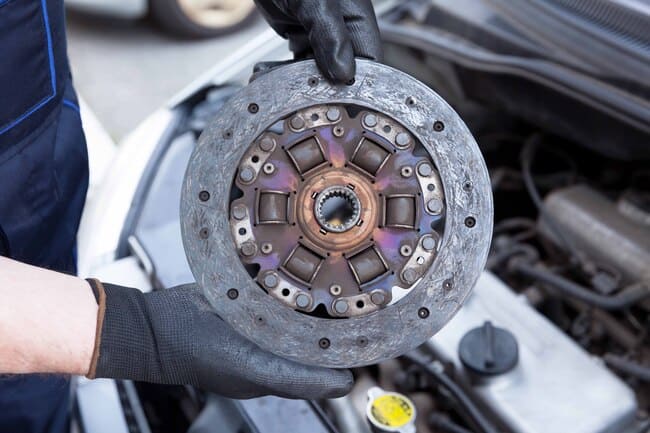
Your car seems to be accelerating more slowly than usual and the hills with major difficulties to overcome? Not immediately locating the faults in the fuel system or the ignition system: if these symptoms are associated with the clutch pedal slipping and an unpleasant burning smell, the problem is probably in the clutch. Let's explain why this is happening and how to avoid it.
Contents
Slipping clutch: Where is the problem?
The correct operation of the system depends on the frictional force between the driven disc and the flywheel. If for some reason the coefficient of friction is weakened, the contact surfaces will start to slip and the torque will not be transmitted as it should by the geared motor. If you accelerate your car to a certain speed, your vehicle will take more time and overall performance will be affected. The car will be harder and driving on hills will require more energy because the power transmitted to the transmission shaft will not be enough to get the car moving.
The 5 most common reasons for a slipping-clutch

- Worn and damaged friction lining and disc surface . An excessively worn friction lining due to reduced thickness does not create sufficient pressure on the surface of the flywheel. The force of the compression of the mechanism is not enough to create a tight connection of all elements. The deformed liner is unevenly pressed against the flywheel.
- The oiling of the pads. It helps to reduce its roughness. Due to the low coefficient of friction, the contact elements slip.
- A weakened or damaged diaphragm spring. If the elasticity of the spring is reduced, the pressure on the driven wheel by pressing the pedal is not enough to activate the device.
- Coupling connection error. Tightened cables for vehicles with a mechanical connection, swelling of the rubber elements and loss of tightness in the elements for vehicles with hydraulic clutches can also lead to slipping clutches, since the pressure on the diaphragm spring is not enough to ensure the fixed contact of the contact elements.
- Damage to wear components. Adjusting the distance is almost impossible due to the damage to the adjustment ring or the sensor spring. This reduces the restraining pressure of the driven wheel.
6 recommendations for avoiding clutch slip

- Replace the system components in the set. The average life of the pressure plate and driven disc, diaphragm spring and trigger bearing is about 100,000-150,000 km. In order for the system to work as well and as long as possible, always replace the components in the set.
- Check the tightness of the components and vehicle assemblies. The engine and gearbox Oil leaks from the oil seal on the drive shaft or crankshaft, as well as loss of tightness of the hydraulic actuator are reasons for a rather poor seal.
- Choose your components according to your driving style. A conventional friction clutch made of composite materials is suitable for smooth and smooth running. It has an optimal coefficient of friction, low operating temperature and is inexpensive. However, a sports car should be equipped with a special clutch for heavy loads. Its liner should be made of materials with carbon and Kevlar additives and mixtures of copper, aluminum, cast iron and ceramics. The clutch must be able to withstand high temperatures, be wear-resistant and suitable for aggressive driving.
- Check that the pedal is adjusted correctly. Insufficient pedal movement will prevent the clutch from fully disengaging. This leads to faster wear of the friction lining and can be a reason for overheating and waviness of the driven wheel.
- Always use the working medium recommended by the manufacturer. Do not mix liquids with different compositions. Aggressive compounds formed by the mixing process or components contained in some types of fluids can be harmful to the hydraulic clutch activation element.
- Follow these guidelines for use of the clutch:
- When starting, first release the pedal to let the vehicle run slowly, and then hold the pedal for two to three seconds until the clutch is fully released.
- Do not drive at high speed ;
- Driving down a steep hill in first gear, stepping on the brake pedal from time to time to avoid overheating components.
- When coming off difficult terrain, such as puddles, snow, or mud, use a towing device if possible;
- Do not step on the clutch pedal or keep your foot on the clutch pedal while driving, as you may accidentally step on the pedal.
- Do not overload the car, especially on bad roads: it significantly increases the load on the vehicle.
Conclusion. Clutch slippage is a common one Malfunction that makes driving uncomfortable and dangerous. In most cases, any driver can prevent such problems. Just buy quality components and follow the recommendations listed above.
